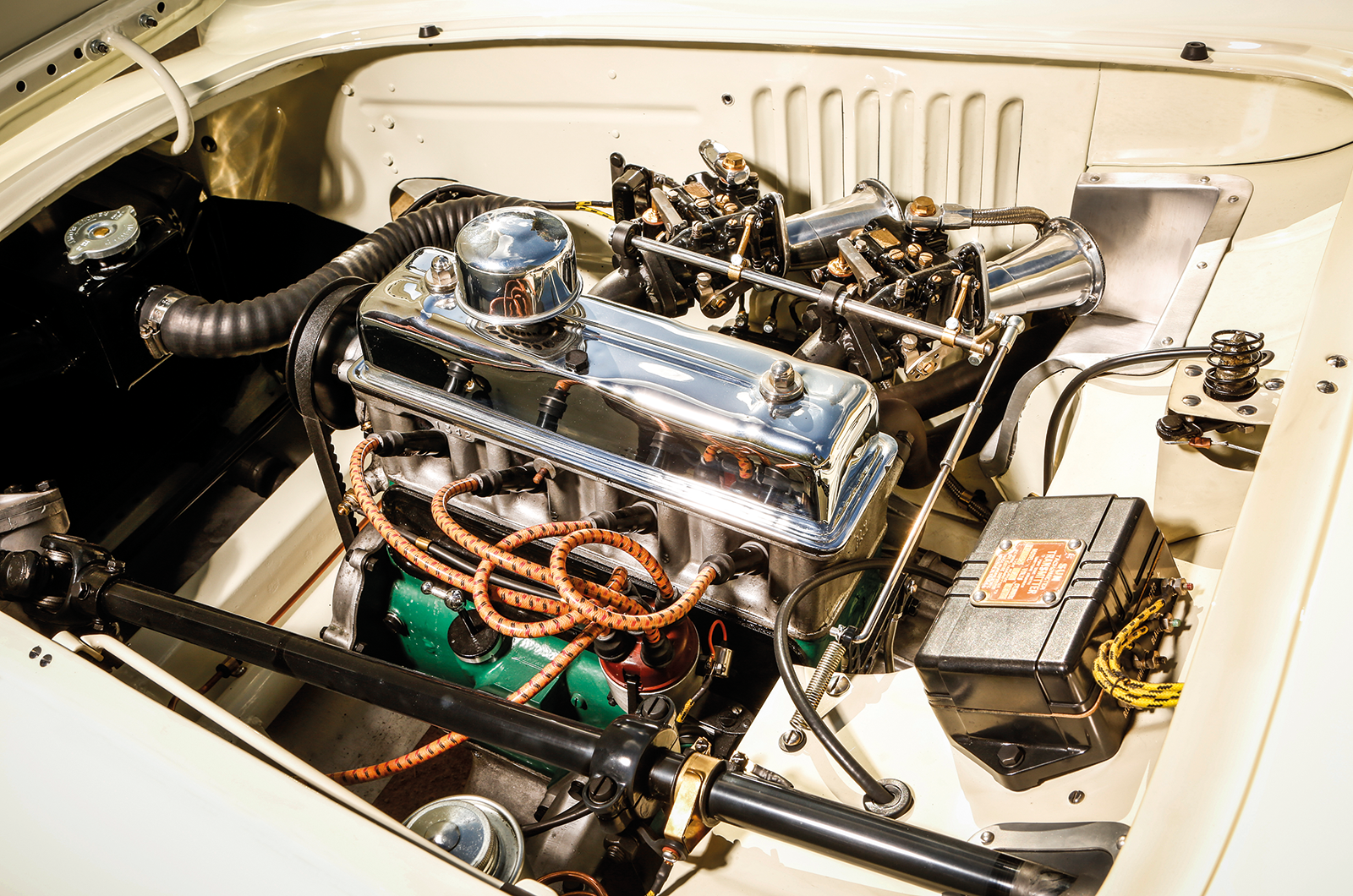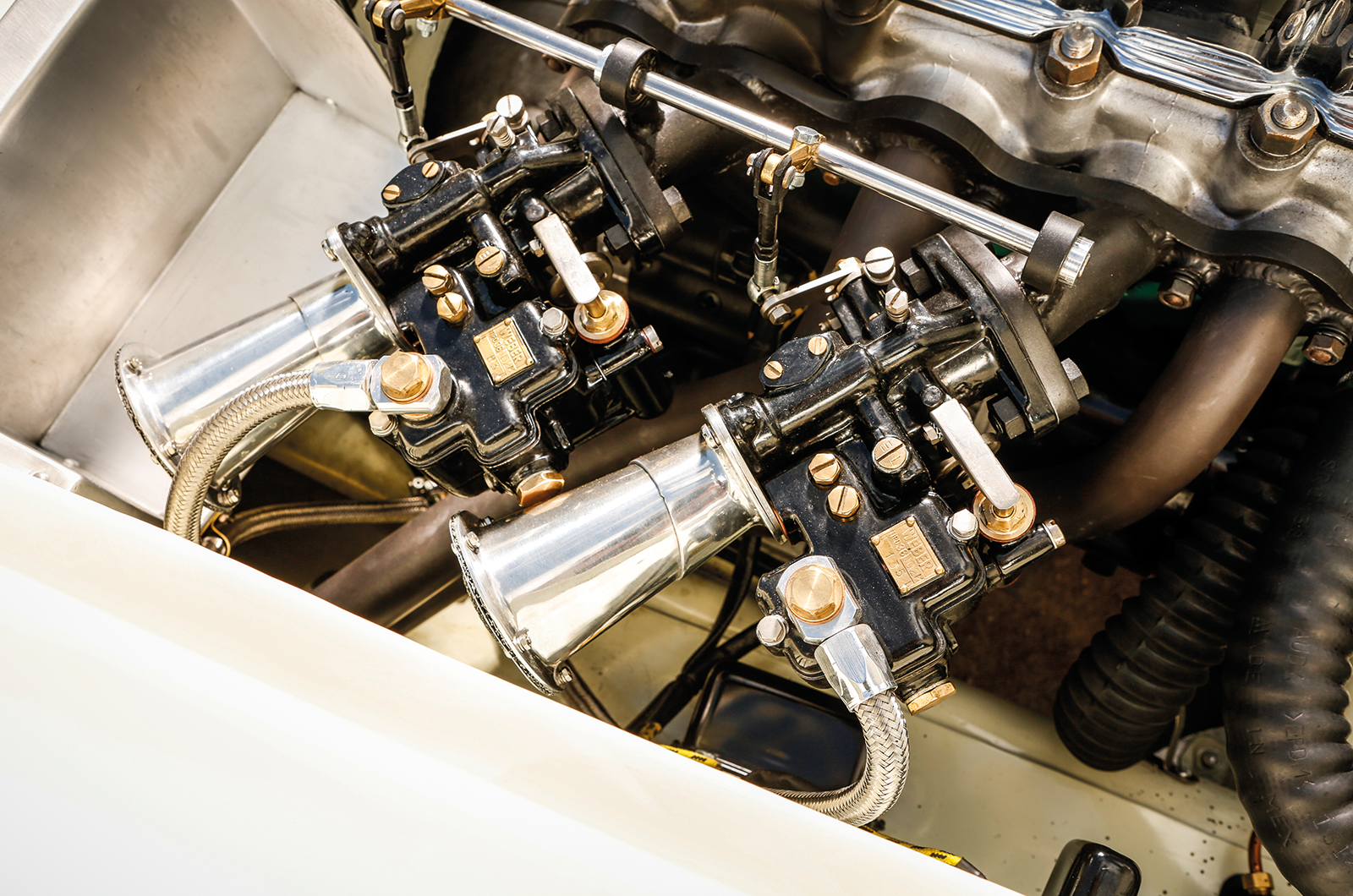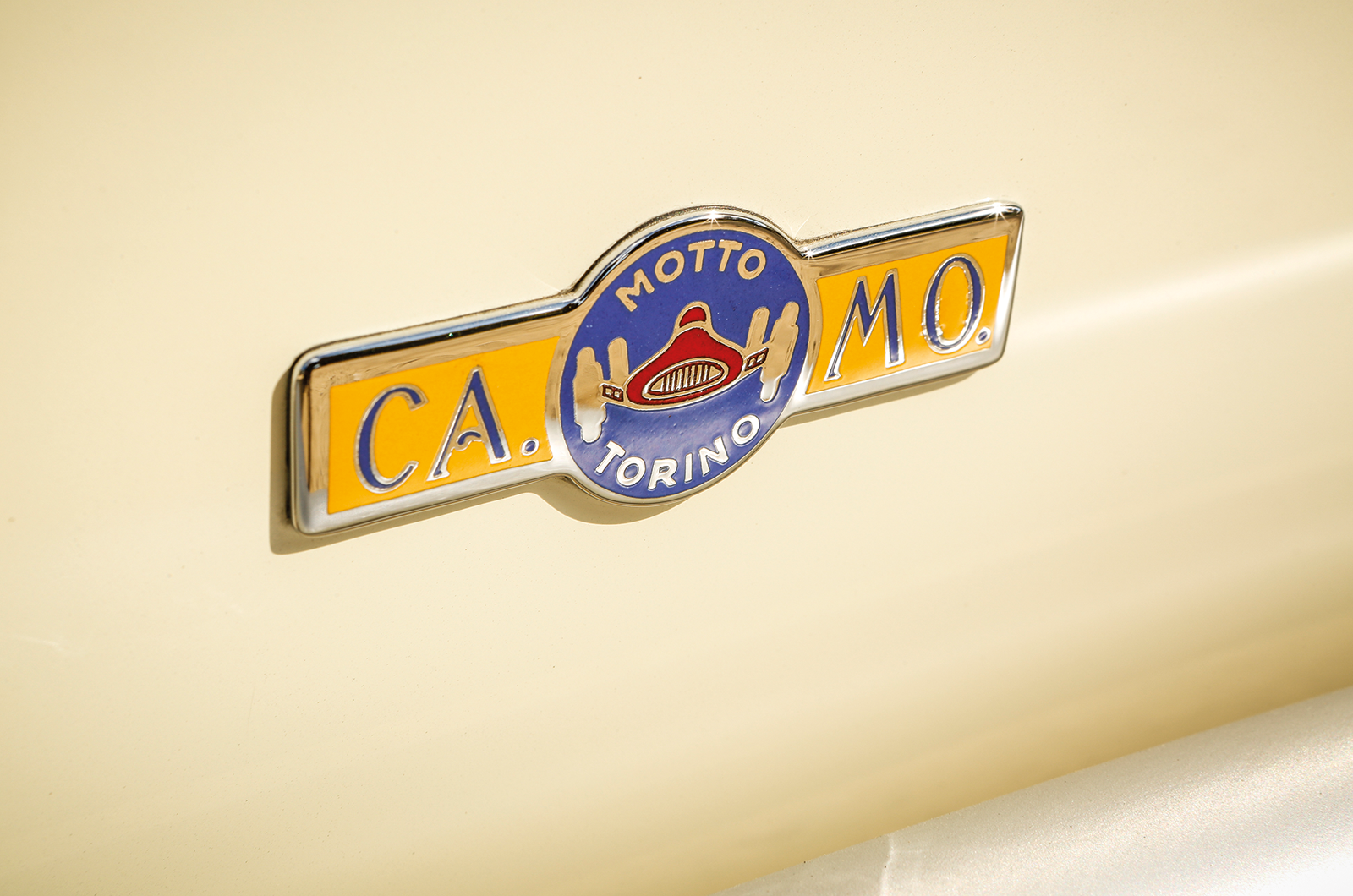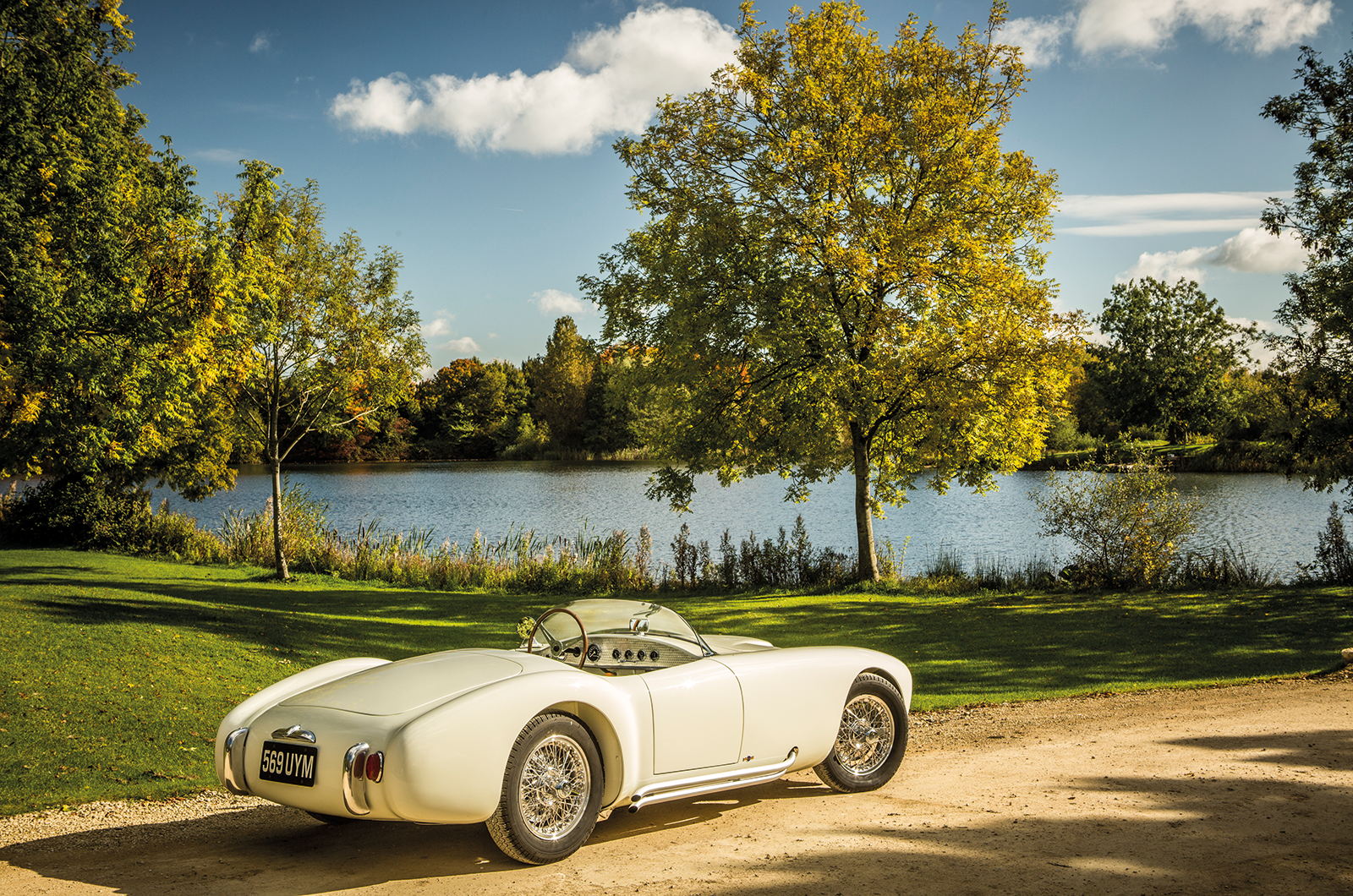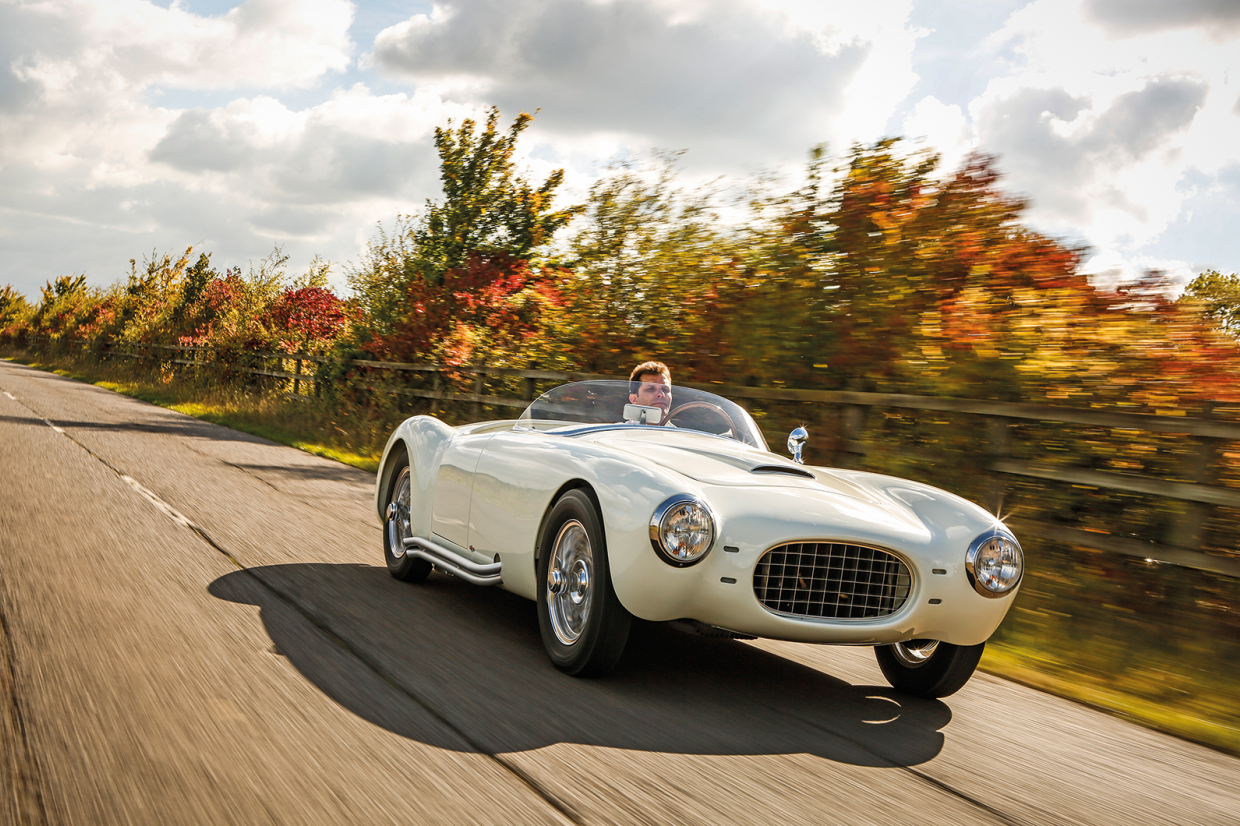
Appearances are deceptive. This lithe, liquiform beauty might just be the perfect sports car, its exquisite shape taking you on a grand tour of the best of Italian coachbuilding.
But only a tiny constructor’s badge gives a hint as to what it might be.
Lancia? There’s a touch of D24 about the front. No. Cisitalia? Almost. From the rear there’s even a light dusting of Porsche 550 Spyder, but it came from Turin.
Viewed alone, there are no clues to its size. It looks tiny, although it’s actually about as big as an MGA, its extreme limbo accentuating the width.
You think you’ve seen it before but that’s master craftsman Motto’s art at work, because this sublime roadster is the only one in the world.

Simple bucket seats and Nardi wood-rim wheel in a sparse cabin, with the gorgeous Sun rev counter straight ahead
And you can join the dots from this delicate beauty back to the MG Midget: not the open-top A35, but the T-series of the 1930s.
Though Abingdon’s sports car had been gratefully received after WW2, pretty soon American racers realised that its square-rigged profile was hampering top speed – even when propelled by Ford V8s – and that better aerodynamics would help.

